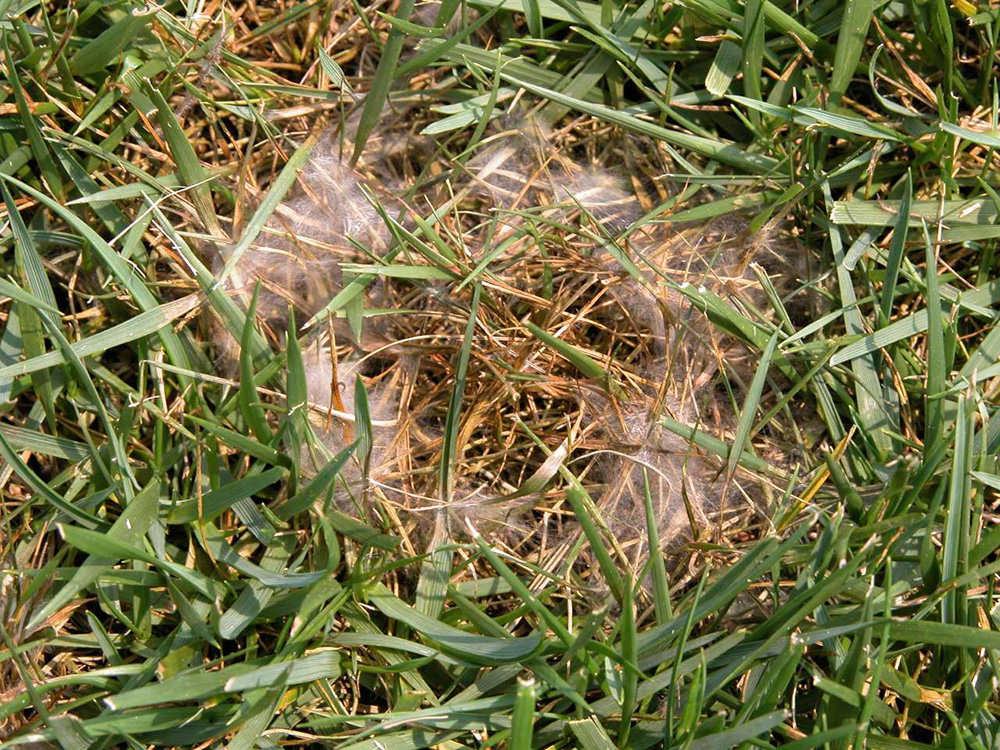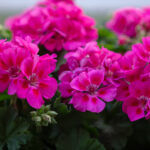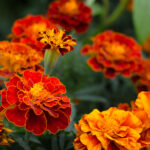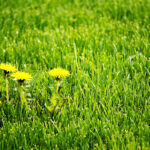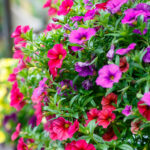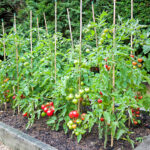
Varieties: Perennial ryegrass and bluegrass
Less affected, if conditions are right: Creeping bentgrass and tall fescue
Pythium blight mold first appears as small, sunken, circular patches up to 1 foot in diameter during hot, humid weather. Affected areas are matted, orange or dark gray in color and greasy in appearance.
Gray, cottony mycelium may be seen in the infected areas when the leaves are wet or humidity is high. The disease spreads rapidly along drainage patterns and tracked with mowing equipment. This disease can cause widespread damage to a lawn.
Warm night temperatures paired with an extended period where leaves are wet are ideal conditions for Pythium blight to develop. For this reason, severe Pythium blight epidemics are commonly observed the morning after a late afternoon or early evening thunderstorm in the summer. Excessive soil moisture and stress from hot daytime temperatures can also encourage development and spreading of this disease.
How to control Pythium Blight:
- Water early in the morning before sunrise to reduce prolonged leaf wetness.
- Avoid establishing turf in low-lying areas that will collect water
- Encourage proper drainage and air flow with aeration, thatch removal and additional drainage.
- Don't mow or irrigate when when mold is present to minimize the spread. Collect and promptly dispose of clippings from infected areas and ensure that mowing equipment is washed before going to an uninfected area.
- Use a fungicide to help control and eliminate the mold.
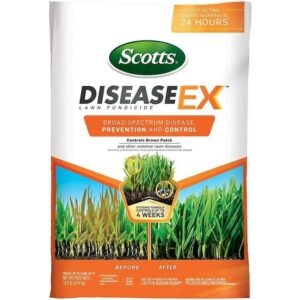
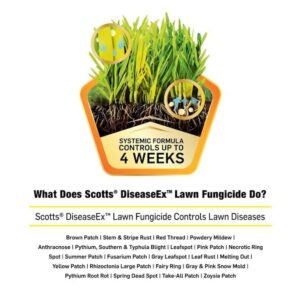
Scott’s MiracleGro Recomends
Scotts® DiseaseEx™ Lawn Fungicide offers a formula to cover a wide range of problem lawn diseases. This new product is fast acting and continues to control lawns diseases for up to 4 weeks.
Photos and content generously provided by The Lawn Institute

